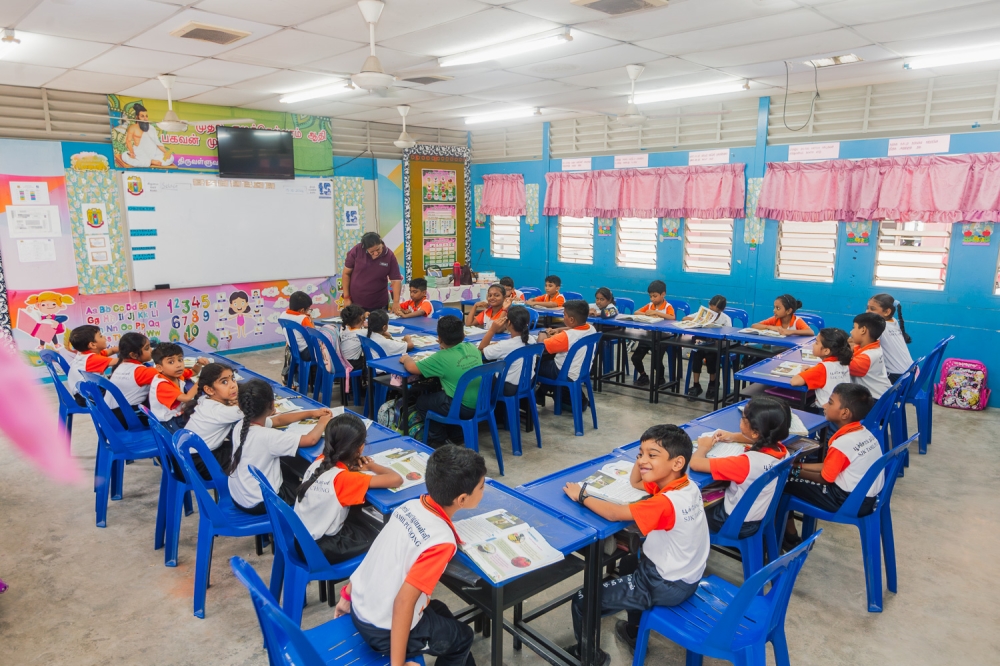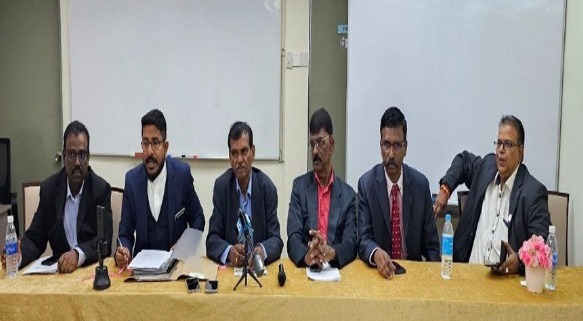Tamil schools in the country are facing a series of ongoing challenges. Recently, reports have highlighted a steady decline in student enrolment, raising serious concerns about their future. As a result, 37 Tamil schools are now on the verge of closure, threatening the preservation of Tamil language education and cultural heritage.
Last year, 24 Tamil schools had fewer than ten students, highlighting the ongoing decline in enrolment. This year, the situation has worsened, with the number rising to 37 schools. According to Arun Dorasamy from the Centre for Vernacular School Excellence, this alarming trend poses a significant threat to the sustainability of Tamil schools and the future of Tamil language education in the country.
Among the 37 Tamil schools struggling with low enrolment, Perak has 14 schools with fewer than ten students, followed by Kedah with 7, Pahang with 6, Selangor with 1, Johor with 6, Negeri Sembilan with 2, and Malacca with 1. These schools are facing a critical challenge, as dwindling student numbers threaten their long-term viability.

If immediate steps are not taken to support and sustain these institutions, they will soon be at serious risk of closure. The decline in enrolment not only affects the schools but also jeopardizes access to Tamil-language education for future generations.
To prevent their closure and ensure their survival, student relocation is crucial. Strategic efforts must be made to encourage enrolment and distribute students more evenly across these schools to keep them operational.
In addition to this, 155 Tamil schools with fewer than 30 students are also at significant risk if relocation efforts are not implemented. Failure to address this issue could have severe consequences, potentially leading to the closure of these schools.
Currently, 155 Tamil schools across the country have an enrolment of fewer than 30 students. Among them, Johor and Kedah each have 25, Kelantan has 1, Malacca has 4, Negeri Sembilan has 18, Pahang has 13, Perak has 55, Penang has 2, and Selangor has 12.

Without immediate intervention, these schools face an uncertain future, with the threat of closure becoming increasingly imminent. Urgent measures must be taken to safeguard Tamil-language education and ensure that these institutions continue to serve their communities.
Over the past 40 years, a significant number of Indians have migrated from rural and plantation areas to urban centers. Today, nearly 89% of the Indian community resides in cities. However, despite this demographic shift, 67% of Tamil schools continue to operate in rural and plantation areas. Moreover, 62% of these schools are located on land owned by plantations, further limiting their growth and accessibility.
With the increasing Indian population in urban areas such as Petaling Jaya, Puchong, and Johor Bahru, there is an urgent need to establish new Tamil schools in these high-density regions to meet the educational needs of the community.
Relocating Tamil schools to urban areas is not a simple process; it is a long and complex undertaking that could take up to 12 to 13 years to complete. Given this challenge, establishing new Tamil schools in cities would be a more effective solution, as it would encourage Indian parents to enroll their children in Tamil schools.
If new Tamil schools are set up in urban areas, student enrolment could increase significantly, potentially reaching up to 100,000. Therefore, the authorities must seriously consider this issue and take necessary steps to either facilitate the relocation of existing Tamil schools or establish new ones in city areas to meet the growing demand.
Arun Dorasamy also emphasized the importance of improving the quality of education in Tamil schools. He highlighted the need for authorities to implement a program that enhances and strengthens Malay language proficiency among Tamil school students.
One of the main concerns among parents is that their children may face language barriers when transitioning to secondary school, where Malay is the primary medium of instruction. Addressing this issue would help build students’ confidence and ensure a smoother academic progression.
Currently, there are a total of 528 Tamil schools in the country, with a student population of 79,751, including preschoolers. These schools are supported by 8,687 teachers. However, 37 schools are struggling with low enrolment, having 10 or fewer students. Of the total schools, 156 are located in rural areas, while 372 are in urban areas, reflecting the shift in demographic distribution over the years.
Arun Dorasamy has urgently called for the establishment of 145 new Tamil schools across 32 districts to meet the growing educational needs of the Indian community. With a significant shift in population towards urban areas, there is a pressing demand for more schools in these regions to ensure better access to quality Tamil education.
The future of Tamil schools in the country is at a crossroads, with declining enrolment and demographic shifts posing significant challenges. While efforts must be made to sustain existing schools, a long-term solution requires strategic planning, including student relocation and the establishment of new schools in urban areas where the Indian population is growing.
Source: Arun Dorasamy Facebook
Follow us on Instagram, Facebook or Telegram for more updates and breaking news.








